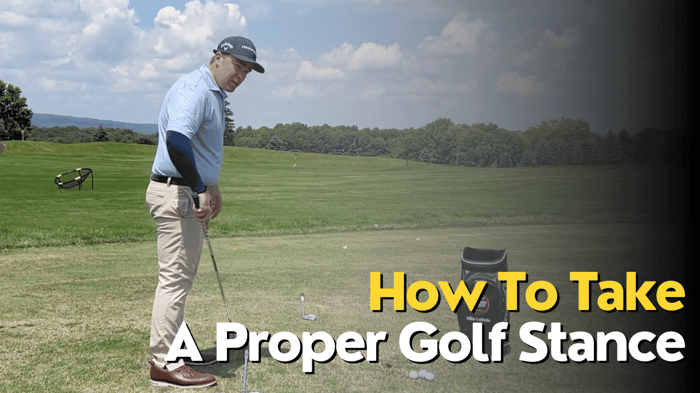Welcome to another video from our Golf Swing Tips series. Our focus for today? We’re going to tackle those dreaded chunks, thin shots, and high left ones, all resulting from a common issue - casting or flipping at the bottom of your swing. By mastering our golf swing tips, especially on how to stop casting in your golf swing, you can level up your game and bring those scores down.
The Role of the Trail Arm in Your Swing
Understanding the casting issue begins with recognizing the role of your trail arm in your swing. When casting or flipping occurs at the bottom, it's usually because the right arm (for right-handed golfers) releases too early. This premature release throws the club behind the ball, often resulting in thin, heavy, or high left shots.
So, what's the solution? The first step is understanding the movement of your trail arm and its timing in your swing.
Bend and Throw: A Simple Exercise
Think of holding a golf ball in your hand. If you release it too early, that's what leads you to release your club too soon. In essence, your arm needs to 'bend and throw'. How does this work? Well, imagine bending your arm and throwing the imaginary ball towards your left foot.
Use a golf club on the ground to represent your impact position—the crucial moment when the club connects with the ball. If you're releasing your 'throw' too early, it'll feel like you're aiming for your right foot. But to correct this, you need to time your release so it lands right on top of the club. Your release should ideally happen later in your swing, giving you more control and power.
The Key Components: Bend, Shift, Throw, and Turn
The 'bend and throw' action is just the start. There are a few more steps to refine your swing. Firstly, you must incorporate a 'shift' in your swing. So it becomes 'bend, shift, and throw.' Lastly, introduce a 'turn,' making the sequence 'bend, shift, throw, and turn.'
Now, it almost mimics the motion of tossing a ball. Practice this sequence slowly and deliberately at first, then speed it up as you get more comfortable.
Putting It All Together
When you put all these elements together, you're well on your way to stopping casting in your golf swing. Imagine this sequence - 'bend, shift, throw, turn' - each time you get set up. Now you're ready to take your shot.
With this new swing sequence, you should start seeing a little more compression and a lower ball flight. You'll likely also start seeing your divot occurring after the ball, a tell-tale sign of a solid shot.
The Outcome: Improved Connection and Lower Scores
And there you have it! These simple golf swing tips on stopping casting in your swing should help you connect better with your shots, resulting in less frustration and, more importantly, lower scores.
Seeing that divot after the ball? That's a sign of gorgeous impact. And remember, practice makes perfect! Take your time to understand and master the 'bend, shift, throw, turn' sequence.
We hope this drill gives you a better understanding of how your trail hand should move during your swing. So, go ahead, start practicing, and watch those scores drop. Stay tuned for more tips and don't forget to click subscribe!





